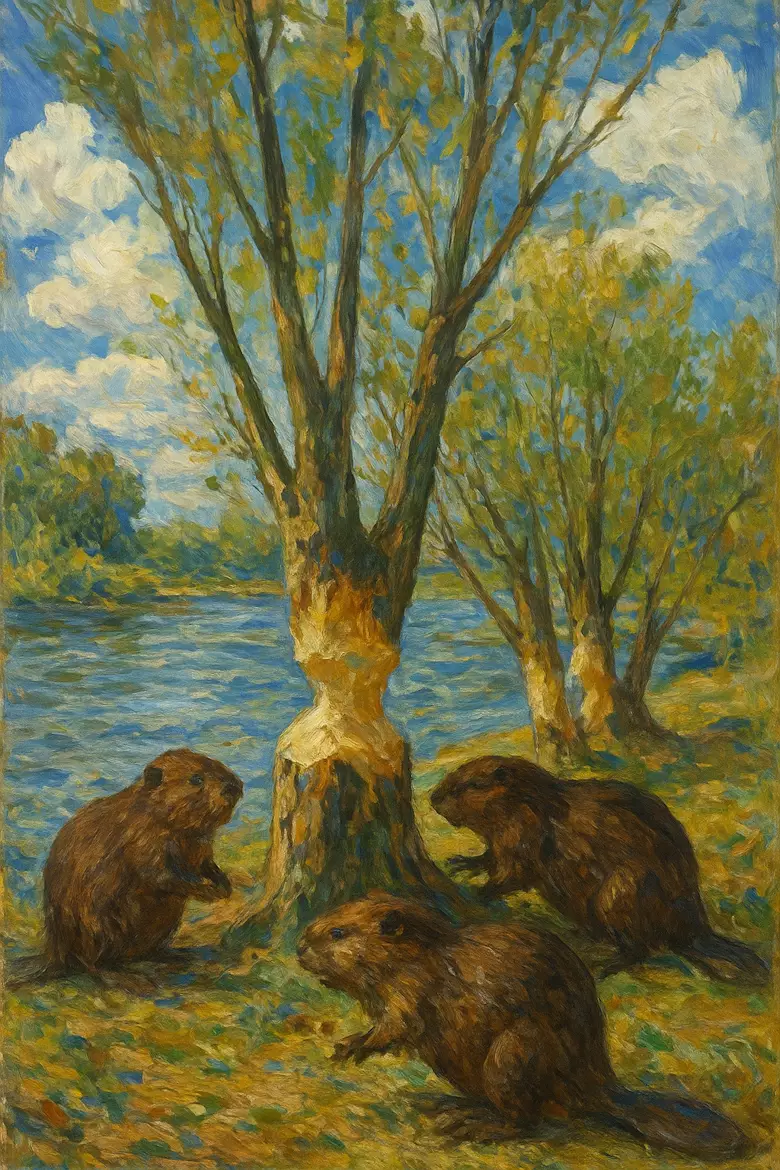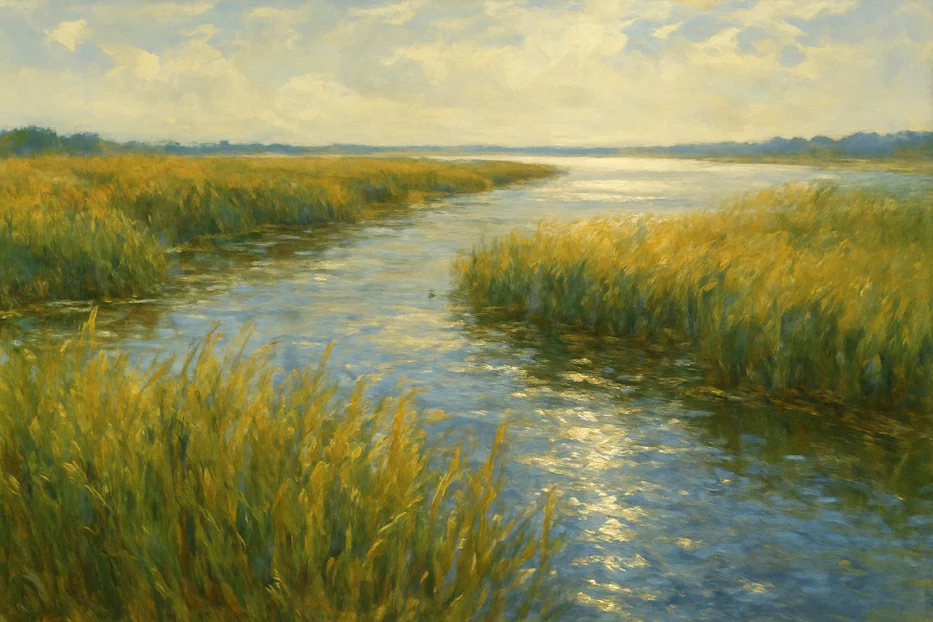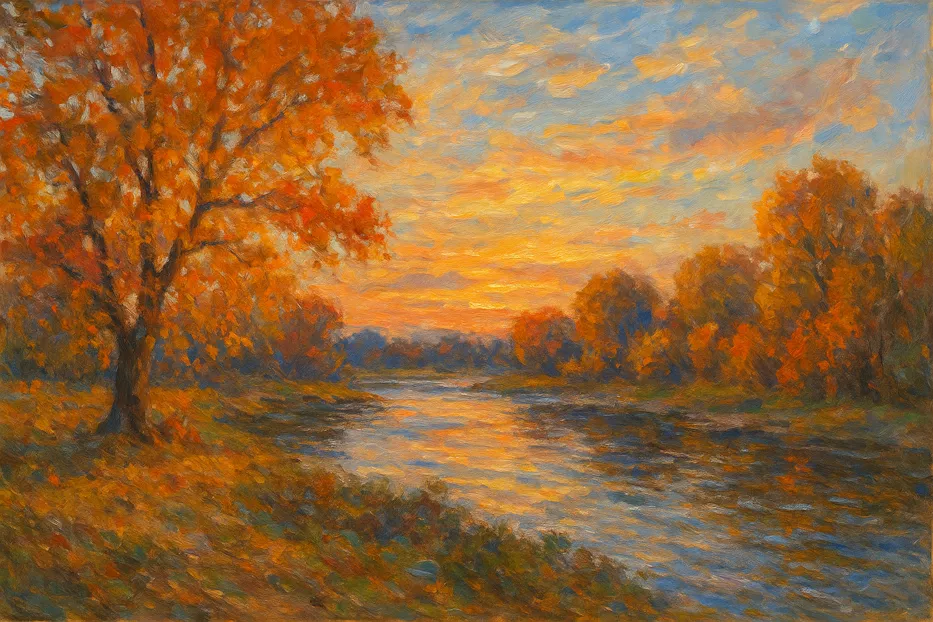There’s a particular light that falls across Žitný ostrov, the largest river island in Europe: a soft, low shimmer that ripples through the tall grasses, catches on the surface of quiet canals, and fades into the silver geometry of the Danube.
It’s the kind of light that feels like a secret: not dramatic or showy, but quietly certain of its place in the world. Fitting, perhaps, for the largest river island in Europe, a landscape that has shaped civilizations yet still manages to exist just beyond the edge of recognition.
Žitný ostrov — literally Rye Island in Slovak — lies in the far southwestern corner of Slovakia, between two arms of the Danube River. Stretching roughly 1,886 square kilometers, it’s a vast, fertile plain bordered by water, woods, and history. Few visitors realize they’ve arrived on an island at all. There are no cliffs or sea breezes, no ferries or harbors. Instead, this is an island of soil, water, and silence — one formed not by tides, but by time.
Table of Contents
A Geography of Quiet Power
To understand Žitný ostrov is to understand the Danube itself. Europe’s second-longest river does not rush or rage here; it divides, multiplies, and meanders. Centuries ago, the Danube’s braided channels and floodplains carved out a network of islands and wetlands, the largest of which became Žitný ostrov. Its southern boundary follows the river’s main course, while the northern line traces the Little Danube, a gentler arm that branches off near Bratislava and rejoins near Komárno. Between them lies a landscape both natural and engineered — a delicate equilibrium of human cultivation and ecological persistence.
This balance is visible everywhere. Rows of corn and sunflowers march toward the horizon, their roots drinking from an aquifer that is said to be the largest reservoir of drinking water in Central Europe. Tiny villages, some no more than a handful of whitewashed houses and a steeple, dot the plain. Canals gleam through the fields like liquid thread, connecting farms and towns in an intricate lacework of waterways. In the morning, mist rises from the irrigation ditches. In the evening, storks settle onto chimneys as if reclaiming their ancestral roosts.
A Hidden Corner of Europe’s Heart
Despite its size, Žitný ostrov rarely appears on maps of Europe’s must-see destinations. It is neither Alpine nor Adriatic, neither cosmopolitan nor conventionally picturesque. Yet that quietness is precisely what gives it depth. For travelers who value authenticity over spectacle, Žitný ostrov is an invitation to slow down, to observe, and to rediscover the idea of place.
The island’s largest town, Dunajská Streda, lies about an hour’s drive southeast of Bratislava. It’s an unassuming regional hub with a lively market, a thermal spa, and a patchwork of cultures that mirror the island’s layered past. Hungarian is heard as often as Slovak, and the region’s cuisine carries the influence of both: paprika-scented fish soup, dumplings, river perch, and slices of dense poppy-seed cake. Just beyond the town, small wine cellars line the roads like punctuation marks, their barrels filled with crisp whites that taste faintly of the limestone soil beneath the Danube plain.
Žitný ostrov’s proximity to Hungary and Austria has shaped its character for centuries. The island once formed part of the Kingdom of Hungary; after the First World War and the Treaty of Trianon, it became Slovak territory. The result is a cultural mosaic that resists simplification. You might see a Catholic procession in one village and a folk dance festival in another, hear the same story told in three languages, and still feel that it all belongs together.
Water, the Constant Presence
Everywhere you turn on the largest river island in Europe, water defines life. It flows beneath the surface, collects in wetlands, nourishes the soil, and cools the air in summer. The abundance of groundwater has made Žitný ostrov one of the most fertile regions in Slovakia, a natural breadbasket whose fields supply much of the country’s grain and produce. But this gift comes with responsibility. In recent decades, debates over water management — particularly around the Gabčíkovo–Nagymaros Dam project — have highlighted the fragility of the island’s ecosystems.
Yet even engineered landscapes can hold beauty. Near the Gabčíkovo hydroelectric dam, a network of artificial channels and reservoirs has created unexpected sanctuaries for wildlife. Herons, egrets, and cormorants hunt along the banks, while beavers leave their gnawed signature on the willows. Cyclists follow the Danube Cycle Path (EuroVelo 6), pedaling through reedbeds and river meadows where the only sounds are the click of gears and the rustle of wings.

To the west, the smaller arms of the river curl around forest reserves like Klátovské rameno, a protected wetland where old willows lean over black water. Floating lilies catch the sunlight; dragonflies stitch invisible seams between air and water. The sense of calm here feels almost monastic — a natural retreat within reach of Central Europe’s busy capitals.
Stories Beneath the Surface
For centuries, Žitný ostrov’s rivers have carried more than water. They’ve borne myths, migrations, and memories. Roman legions once guarded the Danube frontier here; medieval monks drained the marshes and built monasteries; traders ferried salt, timber, and stories between Vienna, Bratislava, and Budapest. Each era left traces — a Roman milestone half-buried in grass, a Gothic church in a forgotten hamlet, a baroque manor surrounded by linden trees.
Local folklore abounds with watery spirits and shapeshifters. One legend speaks of a girl who fell in love with a fisherman and was transformed into a reed by the jealous river god. Another tells of hidden gold buried in the Danube’s old channels, guarded by spectral horses. Whether true or not, such tales express a reverence for water that remains woven into the island’s identity. In Žitný ostrov, the line between land and water — between myth and memory — is always shifting.
The Luxury of Stillness
There are no luxury resorts here, no infinity pools or headline festivals. The luxury of Žitný ostrov is space — the long, unbroken horizon, the slow rhythm of rural life, the intimacy of nature that hasn’t been edited for spectacle. You can stay in a restored farmhouse with a garden of apricot trees, or a minimalist guesthouse overlooking the Little Danube. In the early morning, the air smells of rye and dew. At dusk, the sky stretches so wide that it seems to echo the flatness of the land itself.
For travelers who have grown weary of the predictable European itinerary — another medieval square, another vineyard tour — Žitný ostrov offers something rarer: authenticity without pretense. It is a place to be in conversation with the landscape, not merely to consume it. You might spend an afternoon cycling from one village to the next, stopping to buy honey from a roadside stand or to watch fishermen casting nets into a canal. You might paddle a kayak through a maze of waterways where the only direction is the current. Or you might do nothing at all, simply listening to the whisper of reeds and the hum of distant fields.
Getting to the Largest River Island in Europe
Žitný ostrov lies less than an hour from Bratislava, connected by road and rail — no ferry needed, just a quiet transition from city to river plain. Regular trains and buses link the capital with Dunajská Streda and Gabčíkovo, while the EuroVelo 6 Danube cycle route follows the southern edge of the island for those arriving on two wheels. However you come, the crossing feels almost imperceptible: one moment urban, the next surrounded by water and open fields.
Sustainability as a Way of Life
In an age of overtourism and ecological anxiety, the largest river island in Europe represents an alternative model of travel. Here, sustainability isn’t a marketing term — it’s a necessity, an inherited practice. Locals have long known how to live in rhythm with the river: managing floods, rotating crops, conserving water. The island’s farmers use centuries-old irrigation systems that channel water through a gravity-fed network, wasting almost nothing. Its wetlands act as natural filters, replenishing groundwater reserves and hosting biodiversity that rivals that of national parks.
Visitors can experience this symbiosis firsthand through eco-tours and community initiatives. In the village of Dunajský Klátov, local conservationists lead guided walks through the Klátovské rameno nature reserve, explaining how even minor shifts in water level can affect entire ecosystems. In Gabčíkovo, engineers and environmentalists collaborate on balancing hydropower with habitat preservation. These aren’t staged experiences; they’re windows into a region negotiating the future of Europe’s water resources with both pragmatism and reverence.

Between Capitals, Beyond Time
Žitný ostrov sits quietly between three European capitals — Vienna, Bratislava, and Budapest — yet feels worlds away from all of them. The highway from Bratislava crosses onto the island almost imperceptibly; one moment you’re in the city’s outskirts, the next you’re surrounded by flat fields and windmills. From here, the Danube becomes less of a border and more of a thread, connecting rather than dividing. It’s easy to forget that political frontiers have shifted across this landscape for centuries, leaving behind a gentle kind of resilience.
That resilience defines Žitný ostrov’s identity today. Its communities are small but self-assured, its rhythms slow but purposeful. In a Europe increasingly obsessed with movement and novelty, this island offers a rare continuity. It reminds travelers that sometimes the most revealing journeys happen not across continents, but within the quiet folds of a single river’s course.
A Place That Teaches You to See
To visit Žitný ostrov is to adjust your senses. You begin to notice subtleties: the different shades of green between rye and cornfields, the taste of mineral-rich water, the way light slides across the surface of a canal. You realize that beauty doesn’t always announce itself — sometimes it murmurs. The largest river island in Europe doesn’t ask for attention; it rewards patience.
By the time you leave, you understand why locals speak of the island not as a location but as a condition — a way of being grounded yet fluid, rooted yet open. Žitný ostrov is Europe’s quiet heart, beating softly between rivers, sustaining life as it always has: with water, time, and the unassuming grace of the everyday.

